Ignacio Fleta (1897-1977) est considéré comme l’un des plus grands luthiers espagnols du XXe siècle. Ses guitares ont séduit les virtuoses de son temps, dont Andrés Segovia et John Williams – pour qui il réalisa une fameuse guitare en 1961, qui le suivit pendant plus d’une dizaine d’années. Peu de temps avant la fabrication de cette guitare pour Williams, Fleta réalisa, la même année, un modèle similaire. C’est cet instrument que Vichy Enchères a la joie de vous faire découvrir à l’occasion de la vente du 9 novembre 2024. Cette guitare est l’un des rares exemplaires présents sur le marché. En effet, sur les trente dernières années, seule une vingtaine d’instruments d’Ignacio Fleta ont été proposés aux enchères. Ce modèle est donc particulièrement important en raison de sa rareté et de son époque de fabrication.

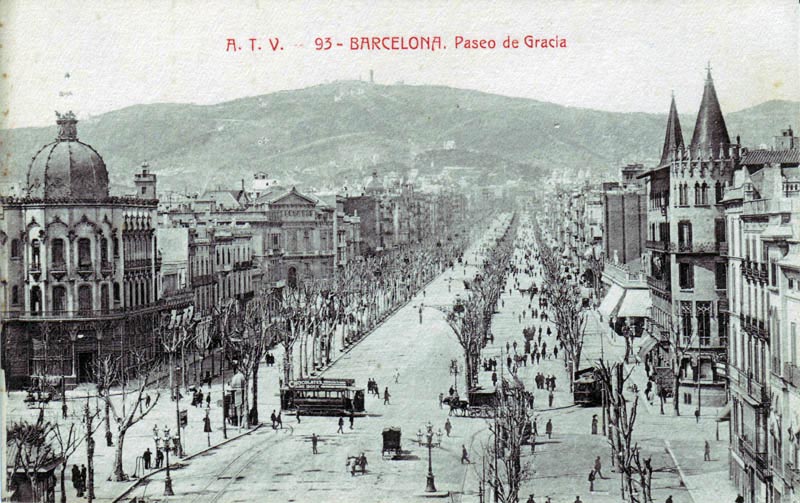
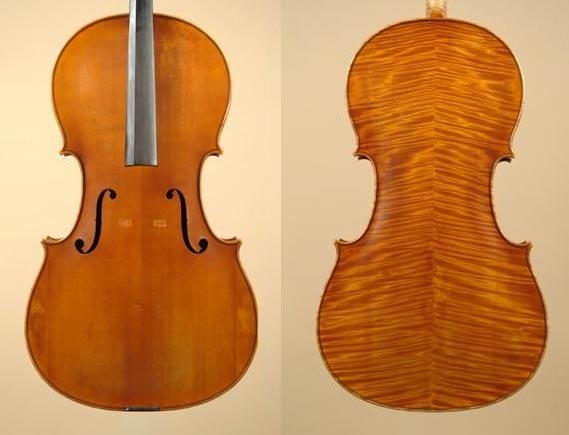
Né en 1897 à Huesa, une petite ville de la province de Teruel (près d’Aragon), Ignacio Fleta est issu d’une famille d’artisans. Son père était ébéniste et ses frères, Francisco Manuel et Bienvenido, furent également formés à l’ébénisterie. Dès l’âge de 13 ans, Fleta quitta son village natal pour rejoindre son frère Francisco Manuel (1890-1971) à Barcelone. Ce dernier s’était formé, dès 1907, à la lutherie chez le facteur de violons Benito Jaunie, et le facteur de guitares Étienne Maire[1].
[1] Françoise et Daniel Sinier de Riddel, Jérôme Casanova, La guitare espagnole 1750 – 1950, 2019
Barcelone était alors un centre important de lutherie et Fleta y trouva l’environnement propice à sa formation. Il se perfectionna d’abord en travaillant avec son frère, tout en cultivant un goût pour la pratique instrumentale – en particulier celle du violoncelle. Ignacio Fleta était un musicien passionné et cette sensibilité musicale influença directement sa manière de concevoir et de fabriquer des instruments. Cet intérêt pour les cordes frottées l’amena naturellement à d’abord se tourner vers la fabrication de violons, violoncelles et contrebasses.
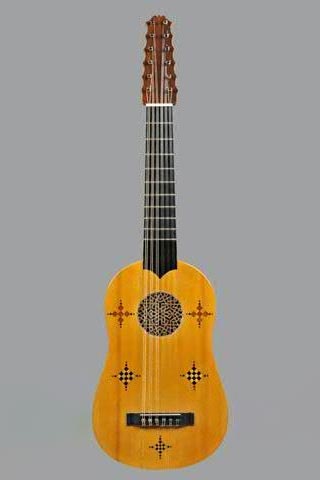
Afin de parfaire sa formation, Fleta s’installa en France où il travailla dans l’atelier de Philippe Le Duc[1]. Cette expérience lui permit de se perfectionner et de se familiariser avec le savoir-faire français. À son retour à Barcelone en 1915, il ouvrit un atelier avec ses deux frères, dans la Calle de Los Ángeles[2], où il se consacra à la fabrication d’instruments à cordes frottées. Ses premières réalisations trahissent une influence de l’école italienne, notamment en ce qui concerne les voûtes, plutôt hautes, et le dessin des volutes en forme d’ellipse[3]. Durant ces premières années, Ignacio Fleta fabriquait une grande variété d’instruments, notamment des violons, des violoncelles, et des copies d’instruments baroques pour des ensembles de musique ancienne, à l’instar de la société Ars Musica. Les instruments de son atelier, y compris les violes et violes de gambe, étaient particulièrement appréciés pour leur fidélité aux modèles anciens et leur excellente qualité technique. Fleta se distinguait par son souci du détail méticuleux, utilisant des vernis sombres et gras rappelant à certains égards le travail du luthier espagnol Esparia[4], avant d’opter par la suite pour des vernis plus clairs et fins, mettant davantage en valeur la beauté naturelle du bois.
C’est à partir de 1927 qu’il commença à travailler seul et à produire, à côté des instruments à cordes frottées, une guitare par an[5].
[1] Ramon Pinto Comas, Los Luthiers Espanoles, 1988
[2] Ramon Pinto Comas, Los Luthiers Espanoles, 1988
[3] Ramon Pinto Comas, Los Luthiers Espanoles, 1988
[4] Ramon Pinto Comas, Los Luthiers Espanoles, 1988
[5] Giovanni Accornero, Ivan Epicoco, Eraldo Guerci, La Chitarra, Quattro secoli di capolavori, catalogue d’exposition, Palazzo del Monferrato Alessandria, 2008
Bien que ses premières créations aient été marquées par la création d’une diversité d’instruments à cordes frottées, Ignacio Fleta se tourna progressivement vers la lutherie de guitares. Ses premières réalisations furent naturellement influencées par la tradition espagnole, en particulier par le travail de Garda ou de Simplicio[1], l’un des grands luthiers barcelonais de l’époque. L’influence de Simplicio est notamment perceptible dans le travail des têtes de guitare que Fleta produisait dans les années 1930[2]. Ses premiers instruments, principalement fabriqués en acajou et en érable, étaient très simples, de taille modeste, et suivaient les principes constructifs de l’école espagnole.
[1] Françoise et Daniel Sinier de Riddel, Jérôme Casanova, La guitare espagnole 1750 – 1950, 2019
[2] Françoise et Daniel Sinier de Riddel, Jérôme Casanova, La guitare espagnole 1750 – 1950, 2019
Comme le souligne Jérôme Casanova, expert et luthier de guitares :
“La singularité d’Ignacio Fleta dans son processus de fabrication est qu’il utilisa, comme il l’avait appris en construisant les violons, un moule interne pour la construction de la caisse – la réalisation du manche se faisant séparément -, pour venir ensuite le fixer à la caisse au moyen d’un tenon et d’une mortaise, ce que l’on appelle le montage moderne, à la grande différence de tous les autres luthiers espagnols qui, eux, fabriquaient uniquement leur guitare à partir d’une solera (simple planche à la forme de la guitare) selon le montage archaïque (dit montage à l’espagnol), où la guitare est construite autour du manche. Cette différence de construction a participé à faire des guitares d’Ignacio des instruments extrêmement puissants et donc très modernes, répondant parfaitement aux exigences de puissance de ceux et celles qui les jouent.”
Jérôme Casanova, entretien du 20/09/2024
Fleta se spécialisa réellement dans la lutherie de guitares dans les années 1950. Cette décision fut influencée par sa rencontre en 1955 avec le célèbre guitariste Andrés Segovia, considéré comme l’un des plus grands virtuoses de la guitare classique moderne. Après avoir assisté à un concert du mythique musicien, Fleta réalisa que la guitare pouvait avoir un potentiel sonore bien plus grand que ce qu’il n’avait pu concevoir jusque-là. Assisté par ses fils, il se consacra dès lors à la fabrication de guitares de concert (fina)[1].
[1] Ramon Pinto Comas, Los Luthiers Espanoles, 1988
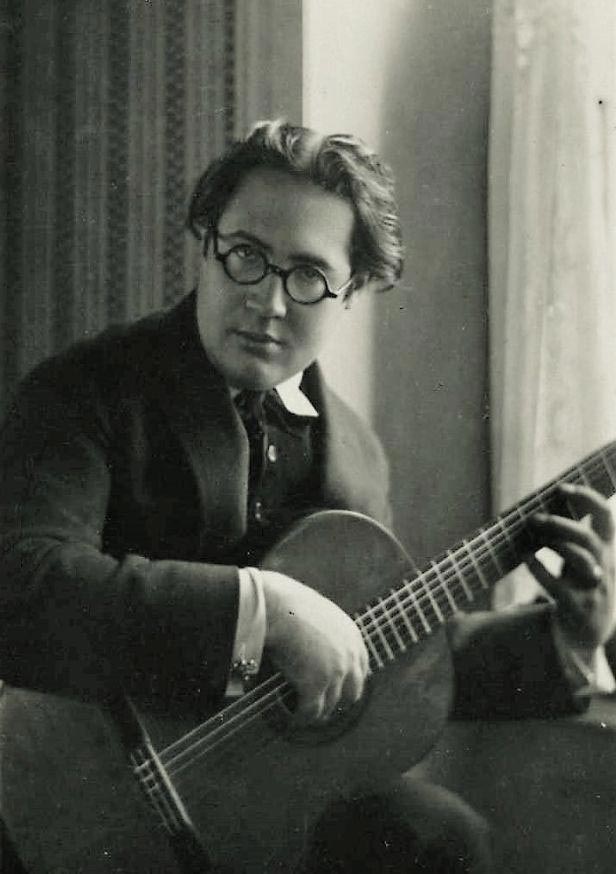
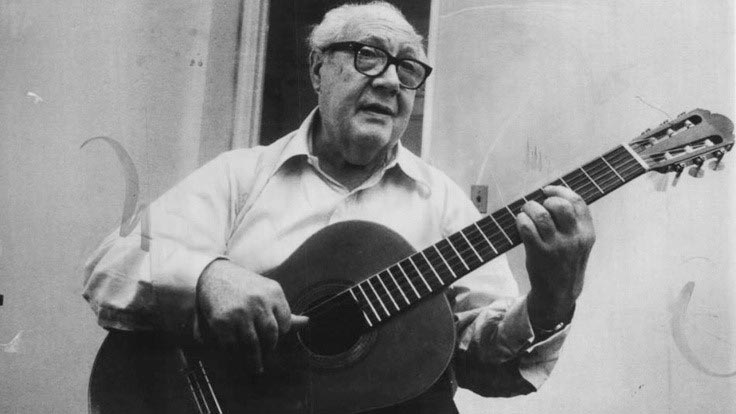
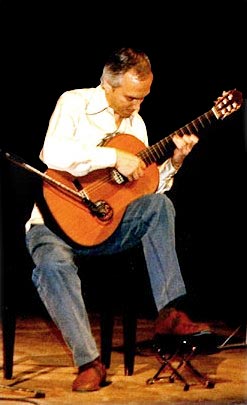
La rencontre avec Segovia fut réellement un tournant décisif dans la carrière de Fleta. Quelque temps après la fabrication de ses premières guitares, Segovia fut impressionné par la qualité des instruments de Fleta et lui commanda, dès 1957[1], trois modèles. Cette collaboration avec Segovia propulsa rapidement Fleta sur le devant de la scène internationale, où ses guitares devinrent très recherchées parmi les plus grands musiciens du monde entier.
[1] Françoise et Daniel Sinier de Riddel, Jérôme Casanova, La guitare espagnole 1750 – 1950, 2019
Les guitaristes professionnels étaient particulièrement séduits par la clarté, la précision et l’homogénéité sonore des instruments de Fleta, ainsi que par leur robustesse et qualité artisanale.
John Williams, l’un des élèves de Segovia de renommée mondiale, joua quant à lui pendant plus de douze ans sur une guitare fabriquée par Fleta. L’instrument, daté de 1961 et numéroté 235, l’accompagna lors de concerts et d’enregistrements à travers le monde[1].
[1] Giovanni Accornero, Ivan Epicoco, Eraldo Guerci, La Chitarra, Quattro secoli di capolavori, catalogue d’exposition, Palazzo del Monferrato Alessandria, 2008
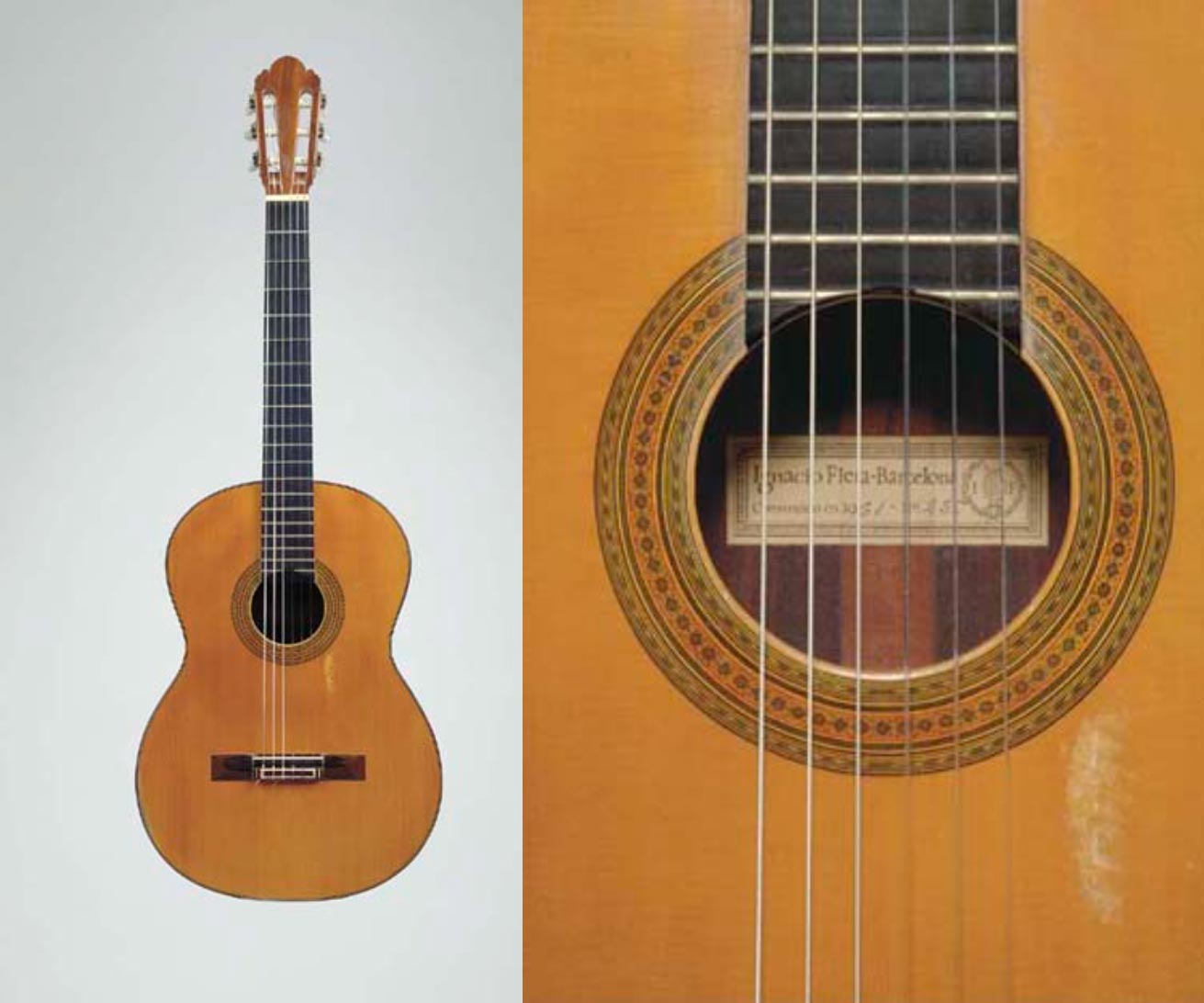
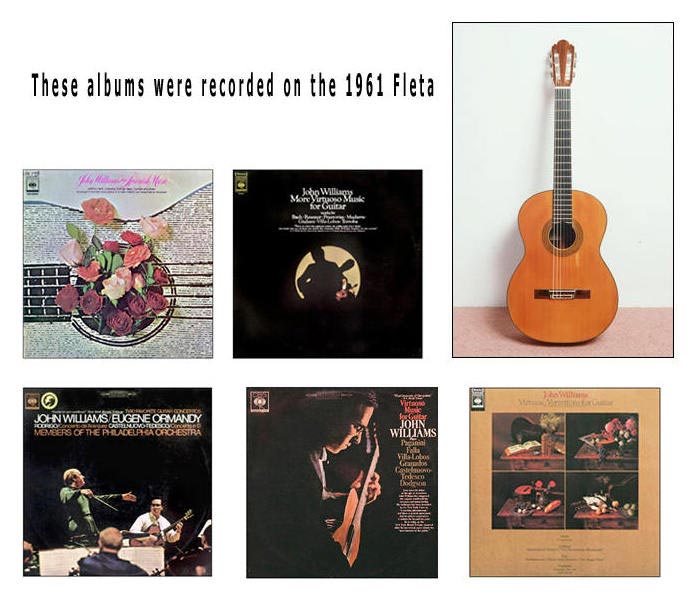
La guitare de la vente Vichy Enchères du 9 novembre 2024 s’inscrit précisément dans ce contexte de collaboration avec les plus grands musiciens de l’époque, à l’image d’Andrés Segovia et de John Williams.
Tout comme l’instrument de John Williams numéroté 235, cette guitare a été réalisée en 1961 – peu de temps avant le modèle du grand musicien, comme l’indique son numéro 211.
Stylistiquement, ces deux guitares sont très proches. Elles présentent déjà les mêmes ornements décoratifs – notamment ceux de la rosace – composés d’un motif central de mosaïques et de deux frises latérales en chevrons (ou os de hareng).
Ce répertoire décoratif est caractéristique du luthier et peut faire office de signature, comme c’est également le cas chez Romanillos ou Friederich – avec lequel Fleta entretenait une grande amitié basée sur de nombreux échanges concernant leurs approches de la lutherie, qui a donné lieu à une riche correspondance.

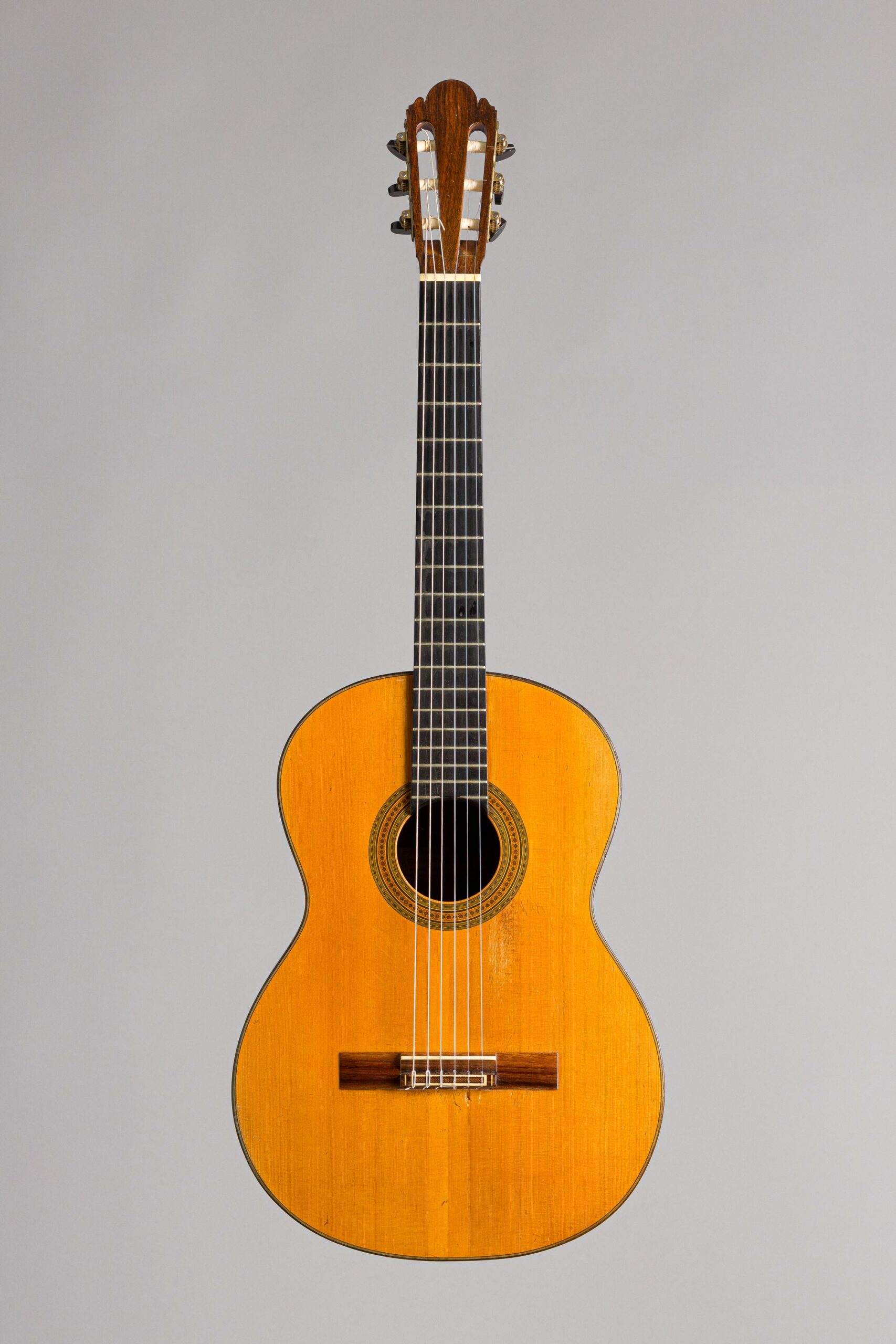

Au cours des années 1950-1960, après avoir longtemps utilisé un barrage de style Torres et produit des guitares aux basses puissantes, Fleta modifia sa façon de faire pour adopter un barrage asymétrique.
Cette conception asymétrique du barrage avait été répandue par des luthiers au XIXème siècle, particulièrement en France, comme c’est le cas de René Lacôte ou de luthiers moins connus tels qu’André Augustin Chevrier. Il est intéressant de le mentionner car, comme le souligne Daniel Friederich, Fleta réalisait un barrage similaire :
“[Le] barrage [d’André Augustin Chevrier] comporte trois barrettes d’éventail profilées « en arbalète » passant au-dessus d’un contre-chevalet à section plate ainsi que deux barres médianes transversales, dont l’une est en biais, et une barre classique sous la touche. On remarque immédiatement que c’est pour l’essentiel, le schéma simplifié évidemment, du barrage de table utilisé par le très fameux luthier contemporain (1897-1977) Ignacio Fleta qui n’a certainement jamais vu de guitares d’André Augustin Chevrier, par ailleurs fort rares.”
Daniel Friederich, Colloque « Acoustique et instruments anciens, Factures, musique et science organisé par la Société Française d’Acoustique SFA – Cité de la Musique, 1998, “Les tables des guitares classiques et leurs barrages: les dilemmes du luthier, symétrie ou non dans la conception structurelle des tables”, texte corrigé et mis à jour par Daniel Friederich en mai 2013, à la demande d’Orfeo Magazine et avec l’autorisation de la Société Française d’Acoustique
Peut-être Fleta avait-il pu, en réalité, observer des guitares de Chevrier lorsqu’il était dans l’atelier de Philippe Le Duc ?
Il se distingue toutefois de ce modèle en augmentant le nombre de barrettes d’éventail de sept à neuf – comme c’est le cas de la guitare de la vente Vichy Enchères du 9 novembre 2024 – et en épaississant considérablement la table autour du chevalet. Comme son contemporain José Ramirez III, Fleta avait en effet adopté l’usage du contre-chevalet – une fine plaquette de bois collée sous le chevalet – dérivant d’un procédé emprunté au luthier allemand Hermann Hauser et qui remonte au XIXe siècle.
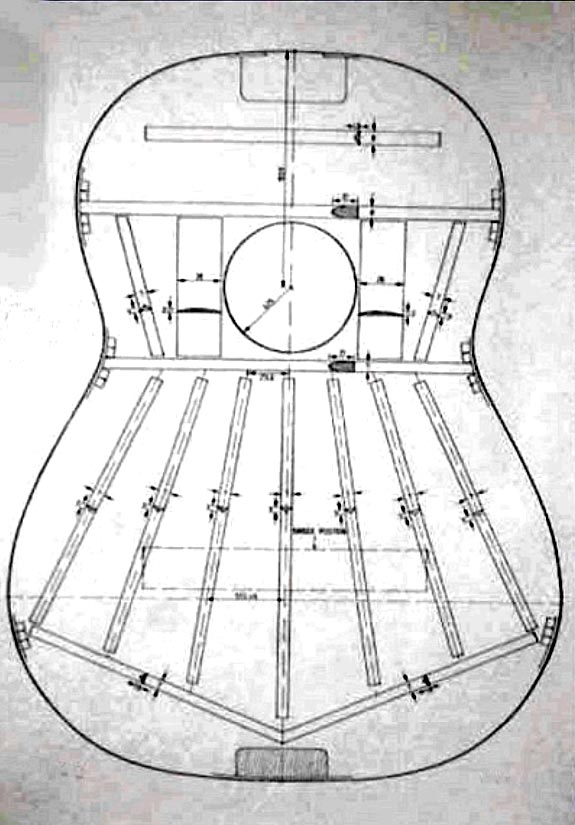
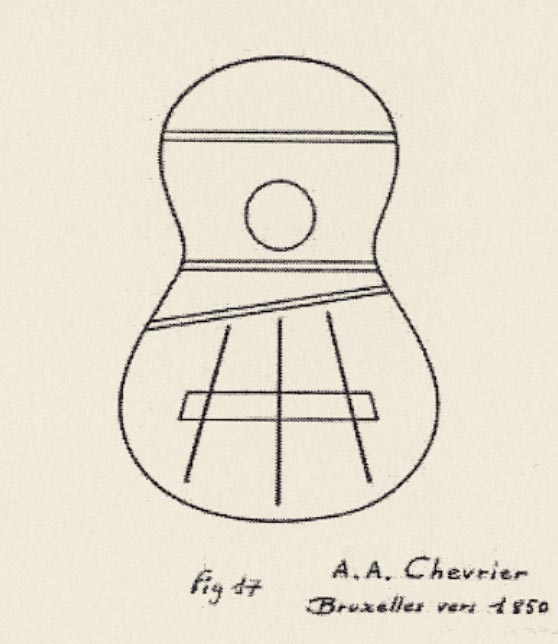
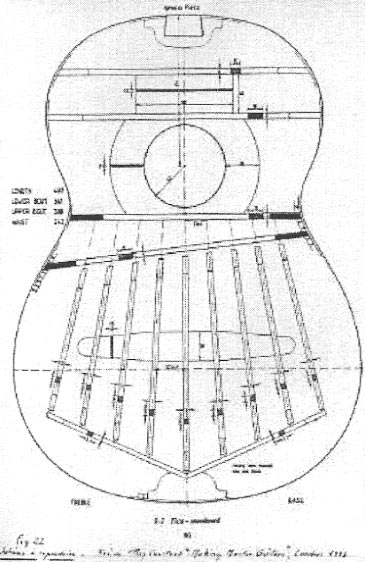
Contrairement à certains de ses contemporains, à l’instar de José Ramírez III, qui dirigeaient des ateliers de production plus industrialisés, Fleta resta toujours fidèle à un savoir-faire artisanal. Chacune de ses guitares était fabriquée avec un soin particulier – le luthier s’efforçant de maintenir une production de haute qualité, refusant de céder à la tentation de la production de masse. Alors que Fleta était au sommet de sa carrière, il n’augmenta pas la cadence. Il fallait alors compter une vingtaine d’années pour qu’un guitariste puisse recevoir son instrument (en raison d’une longue liste d’attente)[1].
[1] Giovanni Accornero, Ivan Epicoco, Eraldo Guerci, La Chitarra, Quattro secoli di capolavori, catalogue d’exposition, Palazzo del Monferrato Alessandria, 2008
Cette attente témoigne à la fois de sa renommée et de celle de ses instruments, ainsi que de sa façon de travailler. Chaque guitare était fabriquée à la main avec des matériaux soigneusement sélectionnés, comme le palissandre indien pour le fond et les éclisses – plus solide que la palissandre brésilien – et le cèdre rouge ou l’épicéa pour la table d’harmonie, comme c’est le cas de la guitare de la vente du 9 novembre 2024.
Toutes ces raisons expliquent aujourd’hui la rareté des guitares Fleta sur le marché. Depuis le début du siècle, seule une vingtaine d’instruments ont ainsi été mis aux enchères.
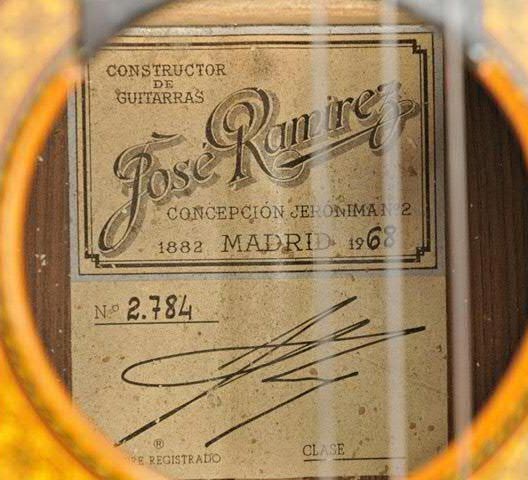
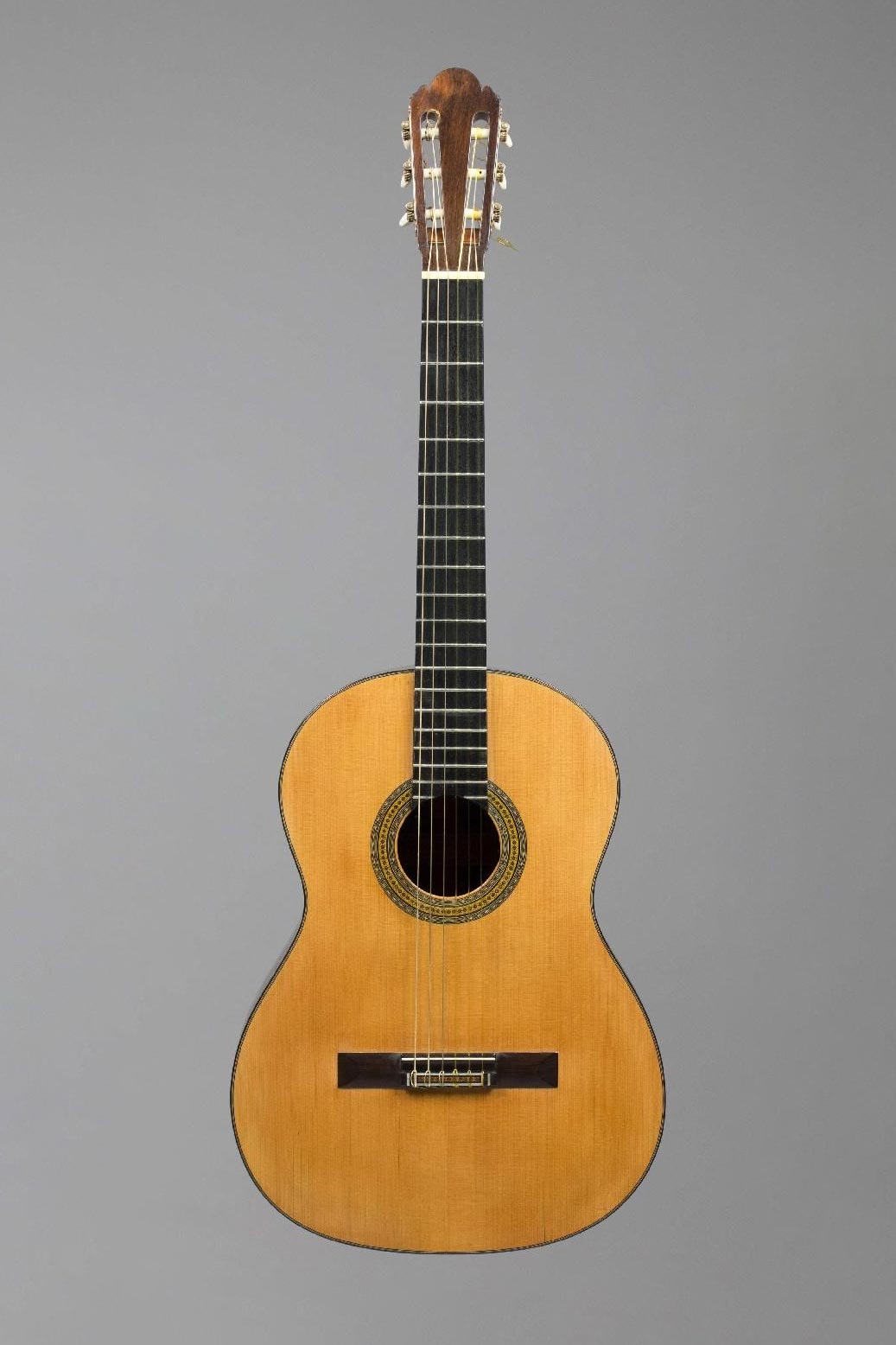
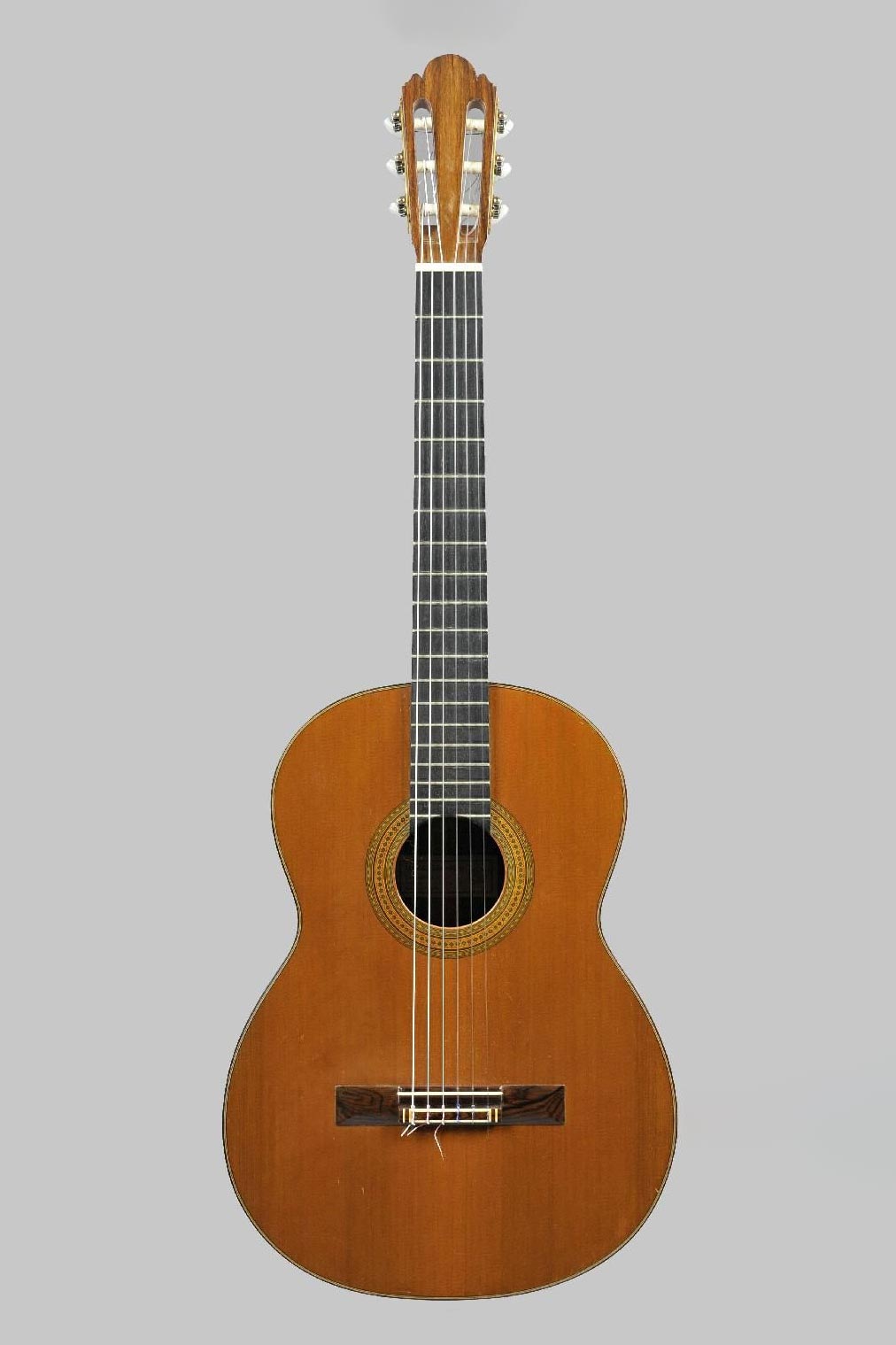
Son travail fut symboliquement élevé au rang de modèle à atteindre en 1967, lorsque Fleta fut nommé en tant que membre du jury du concours international de lutherie de Liège, aux côtés de Robert Bouchet sous le patronage de Pablo Casals et Joachim Rodrigo (ce concours vit Friederich recevoir les médailles d’or et d’argent).
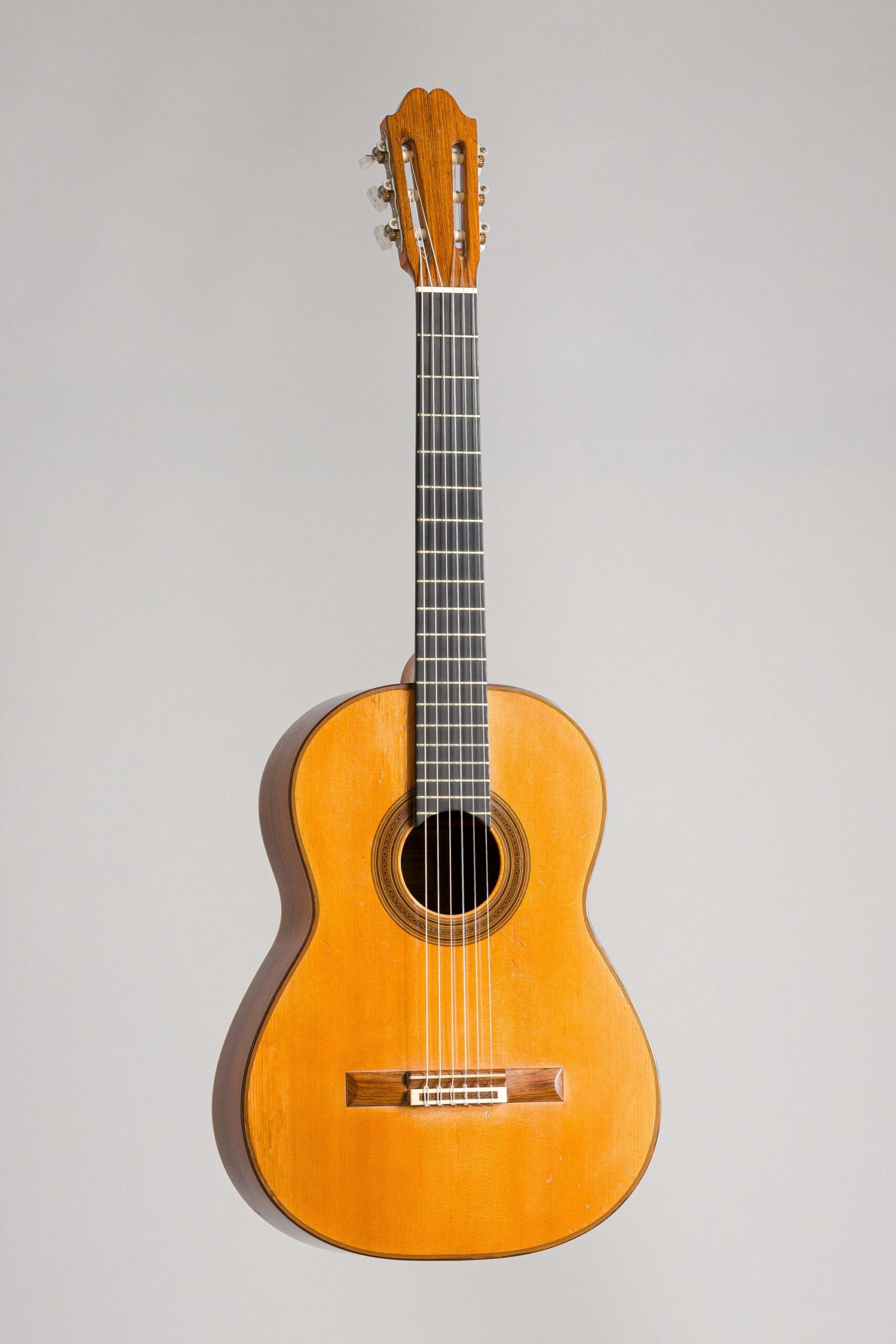
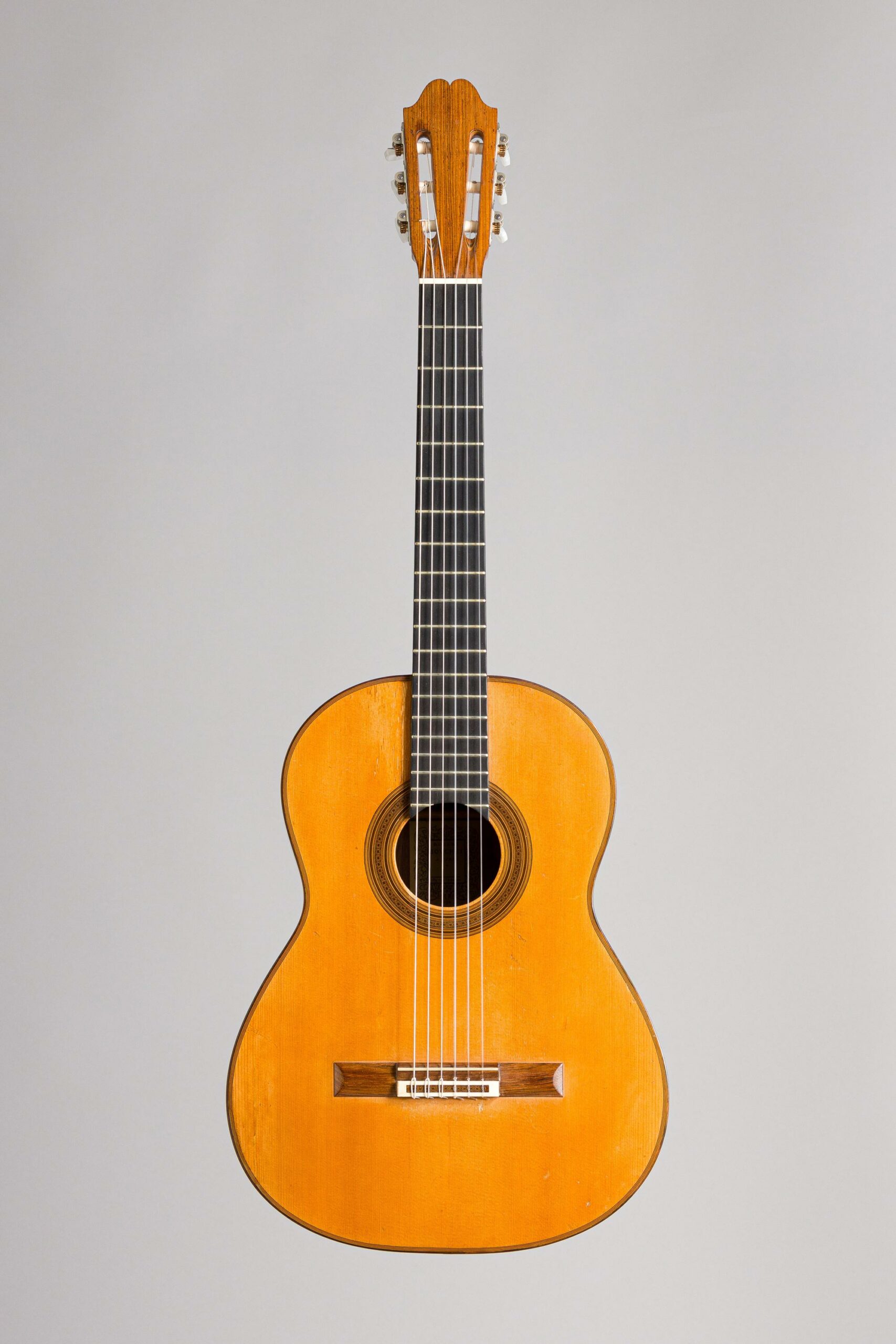
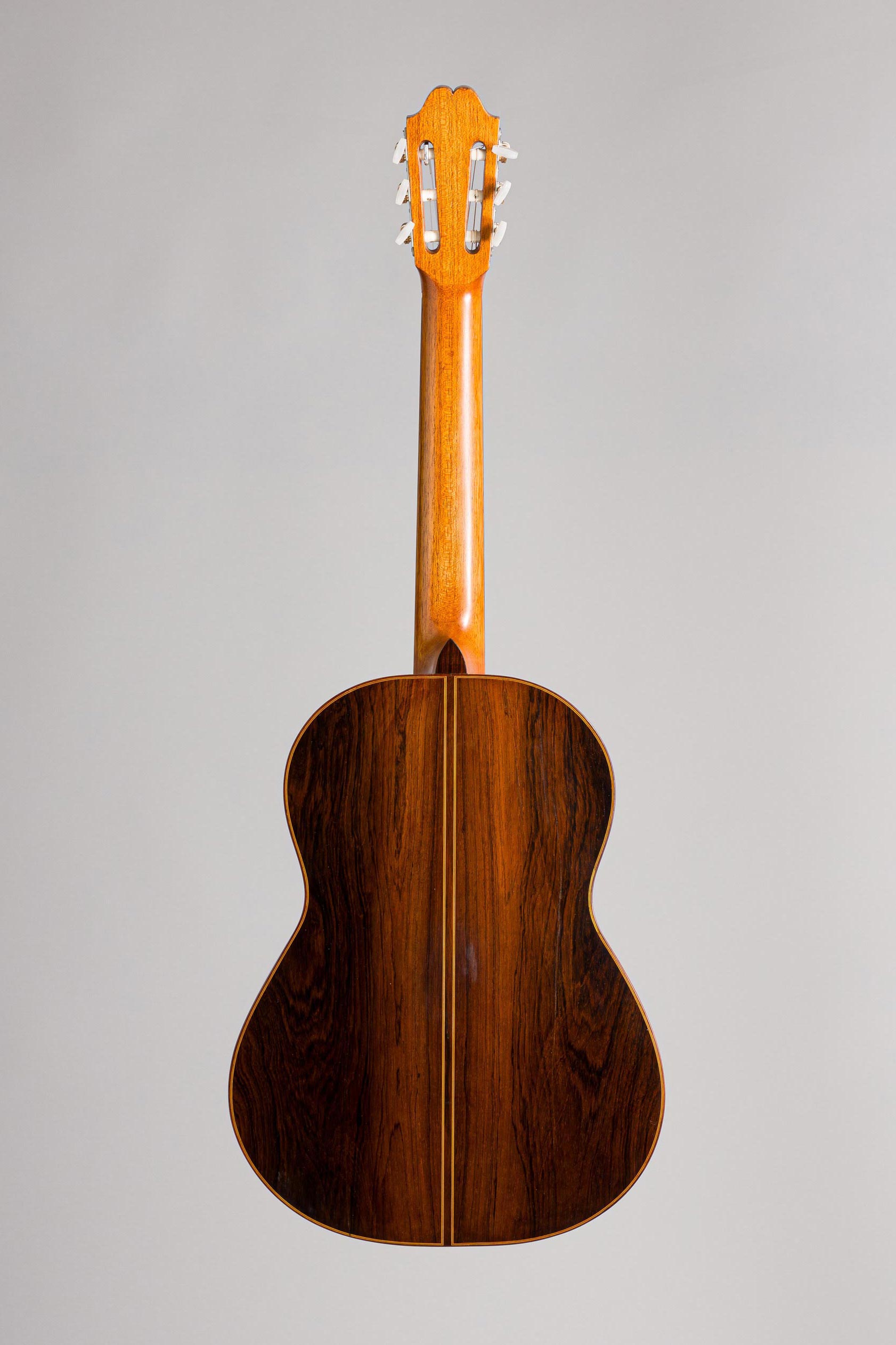
Ignacio Fleta est décédé en 1977, à l’âge de 80 ans, transmettant son savoir-faire à ses fils, Francisco et Gabriel, qui continuèrent d’œuvrer dans l’atelier familial.
L’atelier a par la suite été repris par Gabriel Fleta Jr., le petit-fils d’Ignacio, garantissant ainsi la transmission de l’héritage Fleta à travers les générations.
Ignacio Fleta a marqué l’histoire de la guitare classique par son approche innovante et sa rigueur artisanale. Ses guitares, jouées par des musiciens de renommée internationale, tels que Andrés Segovia et John Williams, ont redéfini les standards de la guitare de concert. Ses innovations dans le domaine du barrage et sa fidélité à une production artisanale ont fait de lui une figure emblématique de la lutherie. Ne manquez pas la vente de cette rare guitare Fleta, le 9 novembre 2024 – le 21ème instrument du luthier présenté aux enchères depuis plus de trente ans !
Ignacio Fleta (1897-1977) is considered one of the greatest Spanish guitar makers of the 20th century. His guitars were played the virtuosos of his time, including Andrés Segovia and John Williams – for whom he made, in 1961, the famous guitar that accompanied him for over ten years. Shortly before making it, Fleta made a similar guitar that same year. It is this instrument that Vichy Enchères is delighted to include in its sale on 9 November 2024. It is a rare example by this maker on the market. Indeed, over the last 30 years, only about 20 instruments by Ignacio Fleta have gone to auction. This example is therefore particularly important because of its rarity and the time it was made.



Ignacio Fleta was born in 1897 in Huesa, a small town in the province of Teruel (near Aragon), and came from a family of craftsmen. His father was a cabinetmaker and so were his brothers, Francisco Manuel and Bienvenido. At the age of 13, Fleta left his native village to join his brother Francisco Manuel (1890-1971) in Barcelona. As early as 1907, the latter trained in instrument making with violin maker Benito Jaunie and guitar maker Étienne Maire[1].
[1] Françoise et Daniel Sinier de Riddel, Jérôme Casanova, La guitare espagnole 1750 – 1950, 2019
Barcelona was then an important centre of instrument making and Fleta found the environment there conducive to his training. He first honed his skills by working with his brother, while pursuing his interest in instrumental practice – particularly that of the cello. Ignacio Fleta was a passionate musician and his musical sensitivity had a direct influence on the way he designed and made instruments. This interest in bowed string instruments naturally led him to turn first to the making of violins, cellos and double basses.

In order to perfect his training, Fleta moved to France where he joined the workshop of Philippe Le Duc[1]. ]. This experience allowed him to hone his skills and become familiar with French making. On his return to Barcelona in 1915, he opened a workshop with his two brothers, on Calle de Los Ángeles[2], where he focused on making of bowed string instruments. His early work is influenced by the Italian school, particularly in the rather high arches and the design of the scrolls[3]. During these early years, Ignacio Fleta made a wide range of instruments, including violins, cellos, and copies of Baroque instruments for early music ensembles, such as Ars Musica. The instruments from his workshop, including viols and violas da gamba, were particularly appreciated for being close reproductions of historical examples and for their excellent technical execution. Fleta was known for his meticulous attention to detail, and his use of dark, oily varnishes reminiscent in some respects of the work of the Spanish maker Esparia[4], before later opting for lighter and thinner varnishes, which brought out more the natural beauty of the wood.
It was from 1927 that he began to work alone and to produce, alongside bowed string instruments, one guitar per year[5].
[1] Ramon Pinto Comas, Los Luthiers Espanoles, 1988
[2] Ramon Pinto Comas, Los Luthiers Espanoles, 1988
[3] Ramon Pinto Comas, Los Luthiers Espanoles, 1988
[4] Ramon Pinto Comas, Los Luthiers Espanoles, 1988
[5] Giovanni Accornero, Ivan Epicoco, Eraldo Guerci, La Chitarra, Quattro secoli di capolavori, catalogue d’exposition, Palazzo del Monferrato Alessandria, 2008
Although Ignacio Fleta started his making career by producing a variety of stringed instruments, he gradually centred his activity on guitar making. His first foray into guitar making was naturally influenced by the Spanish tradition, in particular the work of Garda and Simplicio[1], ], one of the great Barcelonan makers of the time. The influence of Simplicio is particularly perceptible in the heads of the guitars that Fleta produced in the 1930s[2]. His first instruments, mainly made of mahogany and maple, were very simple, of reduced proportions, and followed the construction principles of the Spanish school.
[1] Françoise et Daniel Sinier de Riddel, Jérôme Casanova, La guitare espagnole 1750 – 1950, 2019
[2] Françoise et Daniel Sinier de Riddel, Jérôme Casanova, La guitare espagnole 1750 – 1950, 2019
As Jérôme Casanova, guitar expert and luthier, points out:
“The unique feature of Ignacio Fleta’s making process is that he used, as he had learned when making violins, an internal mould for the construction of the body – the neck being made separately and then fitted onto the body by means of a tenon and a mortise joint, in what is referred to as the modern assembly method, in great contrast to all the other Spanish makers who used a solera (a simple board in the shape of the guitar) and followed the “archaic” assembly (also known as Spanish assembly) method, where the guitar is built around the neck. This difference in construction method helped make Ignacio’s guitars extremely powerful and, by extension, very modern instruments, which perfectly suited the demand for power of the musicians who played them.”
Jérôme Casanova, entretien du 20/09/2024
Fleta fully specialized in guitar making in the 1950s. This decision was influenced by his meeting in 1955 with the famous guitarist Andrés Segovia, considered one of the greatest virtuosos of the modern classical guitar. After attending a concert by the legendary musician, Fleta realized that the guitar had a much greater potential in terms of sound than he had envisaged until then. Assisted by his sons, he then focused on making concert (fina) guitars[1].
[1] Ramon Pinto Comas, Los Luthiers Espanoles, 1988



The meeting with Segovia was a truly decisive turning point in Fleta’s career. Some time after Fleta made his first guitars, Segovia was impressed by the quality of Fleta’s instruments and commissioned three guitars from him in 1957[1]. This collaboration with Segovia quickly propelled Fleta to the forefront of the international scene, where his guitars became highly sought after among the greatest musicians worldwide.
[1] Françoise et Daniel Sinier de Riddel, Jérôme Casanova, La guitare espagnole 1750 – 1950, 2019
Professional guitarists were particularly attracted by the clear, precise and even sound of Fleta’s instruments, as well as by their robust construction and craftsmanship.
John Williams, the world-famous guitarist and student of Segovia, played for more than 12 years on a guitar made by Fleta. The instrument, dated 1961 and numbered 235, accompanied him in concerts and recordings around the world[1].
[1] Giovanni Accornero, Ivan Epicoco, Eraldo Guerci, La Chitarra, Quattro secoli di capolavori, catalogue d’exposition, Palazzo del Monferrato Alessandria, 2008


The guitar in the Vichy Enchères sale on 9 November 2024 belongs to this period of collaboration with the greatest musicians of the time, such as Andrés Segovia and John Williams.
Just like John Williams’s instrument numbered 235, this guitar was made in 1961 – shortly before the great musician’s instrument, as evidenced by its number, 211.
Stylistically, these two guitars are very similar. They share the same decorative features, in particular around the sound-hole, which features a central mosaic motif and two lateral herringbone friezes.
This type of decoration is characteristic of the maker and serves as a trademark, as is also the case with Romanillos and Friederich – with whom Fleta maintained a great friendship judging by the numerous pieces of correspondence they exchanged on the subject of their approach to making.



During the 1950s and1960s, after having long used a Torres bracing system which produced guitars with powerful basses, Fleta modified his approach and adopted an asymmetrical bracing system.
This asymmetrical design of the bracing had been widespread amongst makers in the 19th century, particularly in France, including René Lacôte and lesser-known makers such as André Augustin Chevrier. This is worth noting because, as Daniel Friederich points out, Fleta used a similar type of bracing:
“[The] bracing [by André Augustin Chevrier] consists of three profiled fan bars “in a crossbow” passing over a flat-section counter-bridge as well as two transverse medial bars, one of which is at an angle, and a classic bar under the fingerboard. We immediately notice that it is essentially, albeit in a simplified way, the bracing used by the very famous contemporary maker Ignacio Fleta (1897-1977), who most likely never saw a guitar by André Augustin Chevrier, which are very rare indeed.”
Daniel Friederich, Colloquium “Acoustics and Ancient Instruments, Making, Music and Science organized by the Société Française d’Acoustique SFA – Cité de la Musique, 1998, “The fronts of classical guitars and their bracing: the maker’s dilemmas, symmetry or lack thereof in the structural design of the fronts”, text edited and updated by Daniel Friederich in May 2013, at the request of Orfeo Magazine and with the authorization of the Société Française d’Acoustique
Could Fleta have actually studied Chevrier guitars when he was in Philippe Le Duc’s workshop?
Regardless, he distanced himself from this system by increasing the number of fan bars from seven to nine – as is the case with the guitar in the Vichy Enchères sale on 9 November 2024 – and by considerably increasing the thickness of the front around the bridge. Like his contemporary José Ramirez III, Fleta in fact adopted the use of the counter-bridge, a thin wooden plate glued under the bridge, first used by German maker Hermann Hauser in the 19th century.



Unlike some of his contemporaries, such as José Ramírez III, who ran more industrialized production workshops, Fleta always remained faithful to the traditional methods of the craft. Each of his guitars was made with particular care; the maker strove to maintain the quality of his output, refusing to give in to the temptation of mass production. Even though Fleta was at the height of his career, he did not increase the pace of his making. It then took about 20 years for a guitarist to receive his commissioned instrument[1].
[1] Giovanni Accornero, Ivan Epicoco, Eraldo Guerci, La Chitarra, Quattro secoli di capolavori, catalogue d’exposition, Palazzo del Monferrato Alessandria, 2008
This long waiting list was a testament to both his reputation and that of his instruments, as well as his way of working. Each guitar was handcrafted with carefully selected materials, such as Indian rosewood – stronger than Brazilian rosewood – for the back and sides, and red cedar or spruce for the front, as is the case for the guitar in the sale on 9 November 2024.
All these reasons explain the rarity of Fleta guitars on the market today. Since the beginning of the century, only about 20 instruments have been put up for auction.



His work was implicitly recognized as the standard to strive for in 1967, when Fleta was appointed as a member of the jury of the international violin making competition in Liège, alongside Robert Bouchet, under the patronage of Pablo Casals and Joachim Rodrigo. (This competition saw Friederich receive the gold and silver medals.)



Ignacio Fleta died in 1977, at the age of 80, having passed on his skills and knowledge to his sons, Francisco and Gabriel, who continued to work in the family workshop.
The workshop was later taken over by Gabriel Fleta Jr., Ignacio’s grandson, ensuring that the Fleta legacy would be passed down through the generations.
Ignacio Fleta has left a mark on the history of the classical guitar with his innovative approach and meticulous craftsmanship. His guitars, which are played by famous musicians worldwide, the likes of Andrés Segovia and John Williams, have redefined the standards of the concert guitar. His innovations in bracing and his exclusive use of traditional making techniques have made him an iconic figure in guitar making. Don’t miss the sale of this rare Fleta guitar on 9 November 2024 – the maker’s 21st instrument to be auctioned in over 30 years!